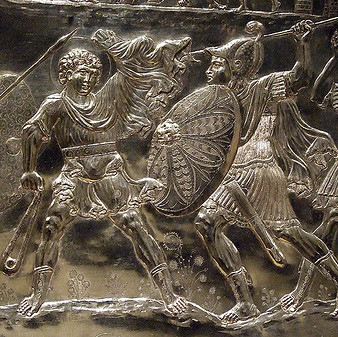Before we jump into the discussion of the existence of miracles, we need to determine what a miracle is. Many different definitions could be proposed, but lets look at a few possibilities:
- Miracle: a violation of natural law (David Hume)
- Miracle: an event that cannot be explained by only natural causes
- Miracle: an event not explicable by natural or scientific laws (wikipedia)
- Miracle: an effect or extraordinary event in the physical world that surpasses all known human or natural powers and is ascribed to a supernatural cause (Dictionary.com)
- Miracle: an unusual or wonderful event that is believed to be caused by the power of God (Merriam-Webster)
Now, many of these definitions have philosophical presuppositions built in, for example Hume’s definition of being a violation of natural law places miracles within the realm of natural occurrences, which is unwarranted in my opinion. Instead, lets try to give a definition of miracles that encompases what Christians mean when we say something is a miracle. There are several qualities that an event must have to be considered a miracle:
- Nature (the material world) cannot posses sufficient conditions to produce the event. This means that the exact circumstances of the event could not have occurred by natural means alone.
- The event must be out of the common occurrence. Otherwise we could not distinguish the event as a miracle.
Now that we have an idea of what we mean by a miracle, what does Hume say?
Hume’s Argument Against Miracles
- A miracle is always the least probable explanation for the testimony about an event.
- There is always a more probable natural explanation for testimony about an event.
- for example that the witness is lying.
- A rational person should believe the more probable explanation.
- Therefore, the rational man should never believe in a miracle.
First it should be noted that, contrary to common belief, this is not an argument for the impossibility of miracles. In fact, it is only an argument against identifying miracles as such. Hume is not claiming that miracles cannot occur, but merely that if a miracle did occur we would have no reason to believe that it was a miracle, since it would be more probable that the witness was lying about what she saw.
At first glance, however, Hume seems to have a point. On the commonsense level, we can clearly see how we tend to reject implausible events as being falsified, but to really analyse the issue, we need to study the mathematics of probability and see if Hume’s argument makes sense. Mathematically, Hume’s argument is that the trustworthiness of testimony (T) to a miracle (M) is the ratio of the probability of M to the probability of T given that M did not occur:
The left hand side of the equation is the “odds” of the miracle testimony being true. Thas is, that the probability of the miracle having occurred given the testimony relative to the probability that the miracle did not occur given the testimony. The right hand side is how we determine the “odds” of the miracle being true according to Hume: the probability of the miracle relative to the probability of false testimony to the miracle. Since the probability of false testimony, according to Hume, is greater that the probability of a miracle, the odds are always less that one, and we should never believe in miracles. The problem with David Hume’s math here, is that it does not just keep us from believing in miracles, but also justifies us disbelieving all kinds of ordinary beliefs. Consider an example:
David Hume Wins the Lottery
David Hume, after wondering if his apartment existed when he wasn’t looking at it, had a bit too much to drink and made a late night trip to the corner store to buy a lottery ticket. Now, understanding the probabilities involved, Hume would have never done this sober, but with one to many drinks in him, he was easily convinced by the clerk. The next morning, regretting his purchase, Hume flips through his newspaper. On page three, he sees the announcement of the winning lottery number. Digging his ticket out of his pocket, he matches the numbers:
1, 28, 2, 5, 87, 5, 36, 45…
It matches!!! But what does Hume do next? He uses his probability equation of course.
Where L is him winning the lottery, and N is the the newspaper reporting that he won the lottery. Now, his lottery ticket had eight 2 digit numbers on it, that means that . Of course the news paper is not perfect, but it is very accurate. The probability of an error is one out of a million. This means that
. So what are the odds of the newspaper correctly reporting that Hume won the lottery?
Not good! According to Hume’s argument, you can never know if you have won the lottery!
Bayesian Statistics
The reason that Hume’s probability math fails, is that modern probability (Bayesian probability) had not been developed in his time. Today we know that the correct formulation for the odds of such an event occurring is determined by:
This is very similar to Hume’s formula, but you can see the addition of two terms on the right. If we consider The argument for miracles:
Therefore we can rewrite the Bayesian equation as:
Now we can see that the odds for the miracle account can be grossly balanced, and a rational person could either accept or reject it depending on precisely how she estimates the probabilities.
Now Hume also made an argument for why is always the least probable possibility. He claimed that the regularity of nature testified against miracles. Although it seems generally true that we consider miracles somewhat unlikely in any arbitrary circumstance, I see no reason that we should consider them to be as unlikely as Hume asserted. Why should natural law testify against non-natural events?
The Resurrection
Lets look at an example of a miracle, specifically the resurrection of Christ. The relevant issues:
The evidence includes:
- The early history of the Church (H)
- Jesus died by Roman crucifixion (C)
- His Tomb was found empty by a group of women (W)
- The Disciples experienced what they believed was the risen Christ (D)
- Enemies of Jesus experienced what they believed was the risen Christ (J)
Now, what if, instead of trying to determine the odds just of the resurrection, we determine the odds of the resurrection versus the other competing explanations? The five facts above are facts that are acknowledged by the majority (see Habermas) of secular scholars. In order to compare an alternative hypothesis, we need to alter our equations:
Since we have multiple lines of independent evidence:
Where A is the alternative hypothesis to the resurrection. Lets assign some numbers to see how the math works out. These numbers are highly subjective of course:
The high percentages simply mean that if the resurrection story is true, we would expect those pieces of evidence. for example, if Jesus rose from the dead and appeared to James and Paul, we would expect them to then cease being enemies and proclaim Christianity. Now we can look at some alternatives and decide how they compare.
The Hallucination Theory
This theory poses that Jesus was crucified and died, and then his followers hallucinated that they saw him risen. So what are the relevant probabilities?
\
Relative odds of the resurrection compared to the Hallucination Theory:
The Stolen Body Theory
This theory poses that Jesus was crucified and died, and then his followers stole his body. So what are the relevant probabilities?
\
Relative odds of the resurrection compared to the Stolen Body Theory:
This theory seems to be much more plausible than the Hallucination Theory, but it is still less plausible than the Resurrection.
The Swoon Theory
This theory poses that Jesus was crucified but fainted and did not die. So what are the relevant probabilities?
\
Relative odds of the resurrection compared to the Swoon Theory:
The Dude Named Jesus Theory
This theory poses that Jesus was just some radical preacher in palestine, but we do not really know anything else about him.
Relative odds of the resurrection compared to the Dude Named Jesus Theory:
This theory is utterly implausible compared to the resurrection.




